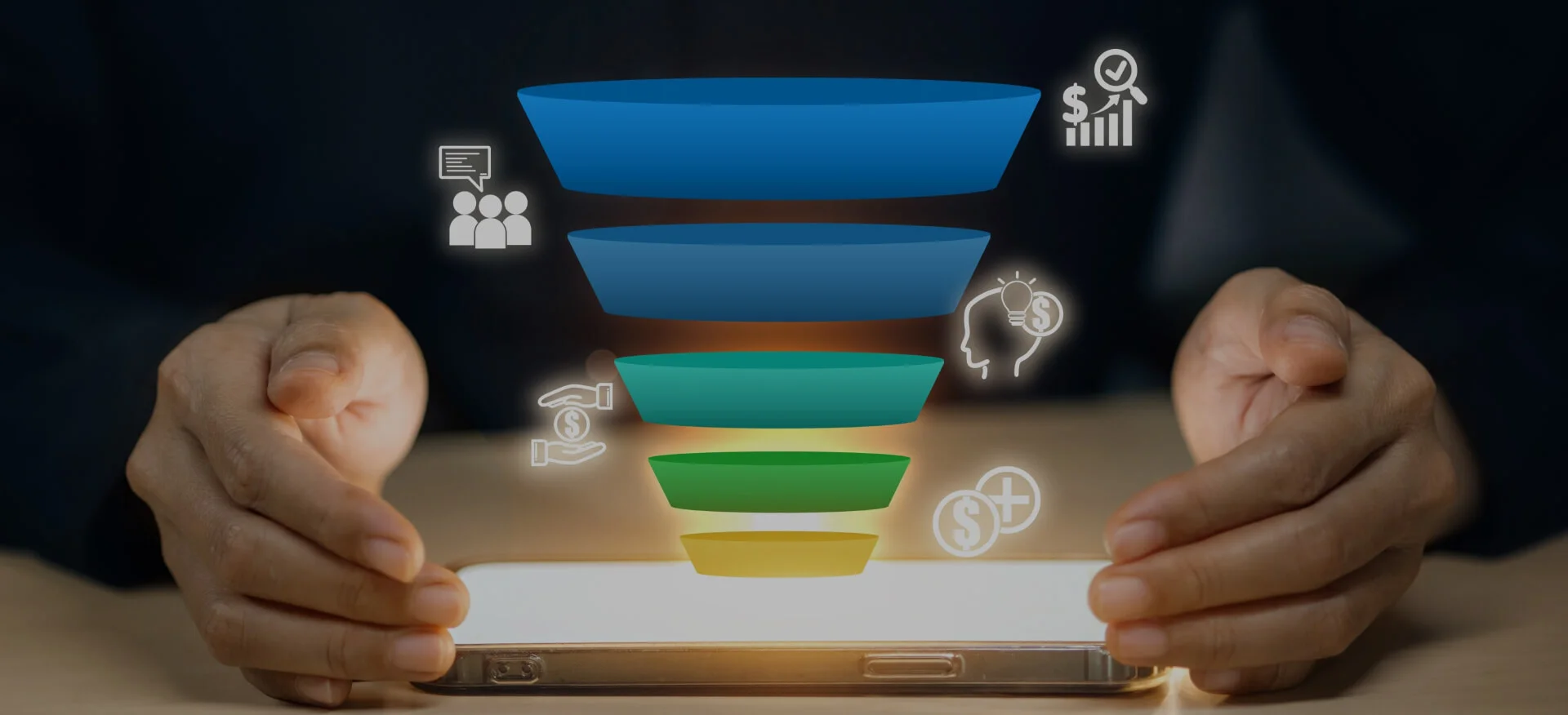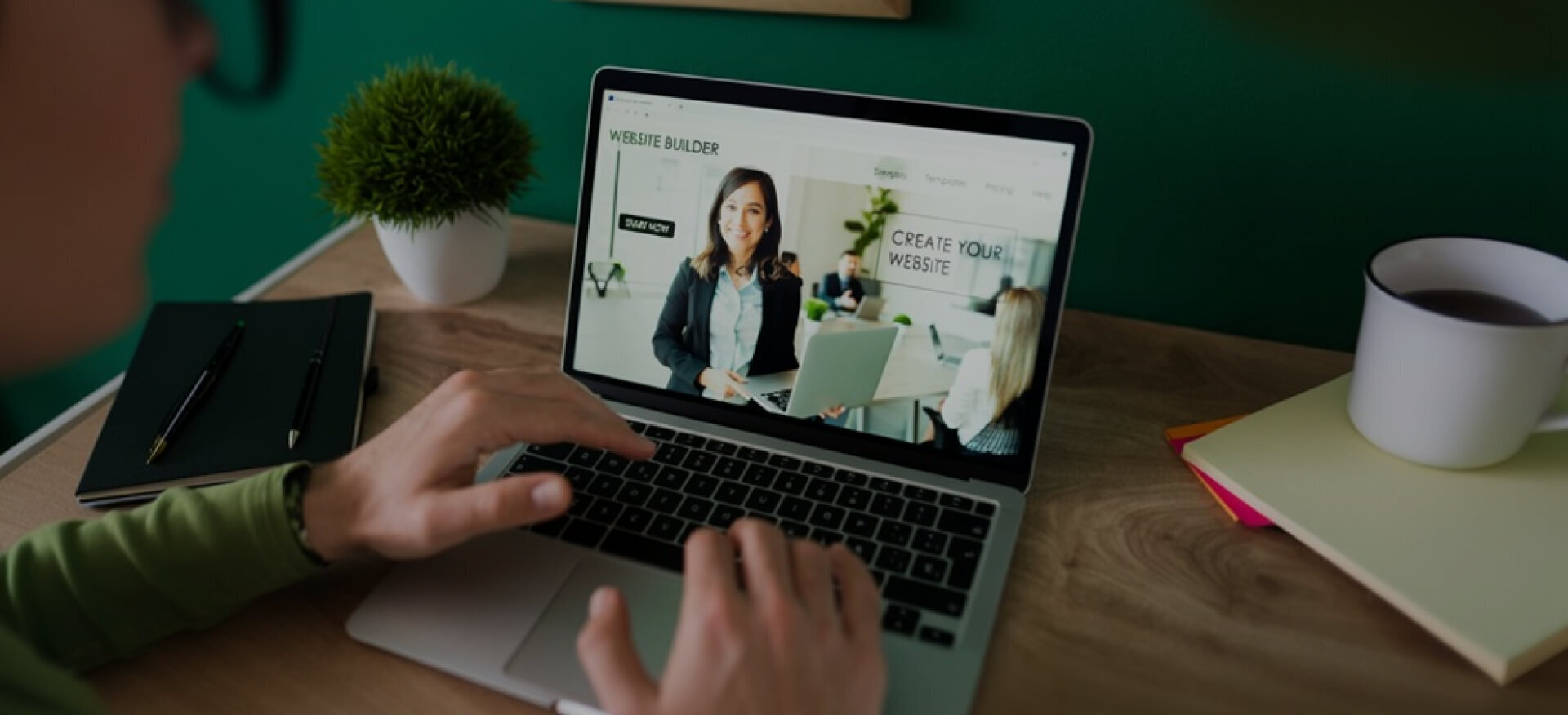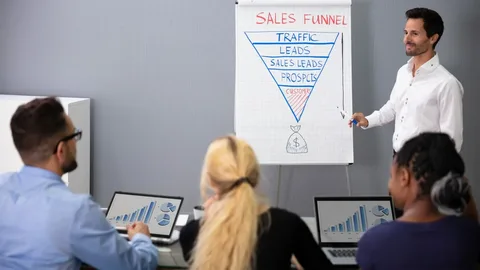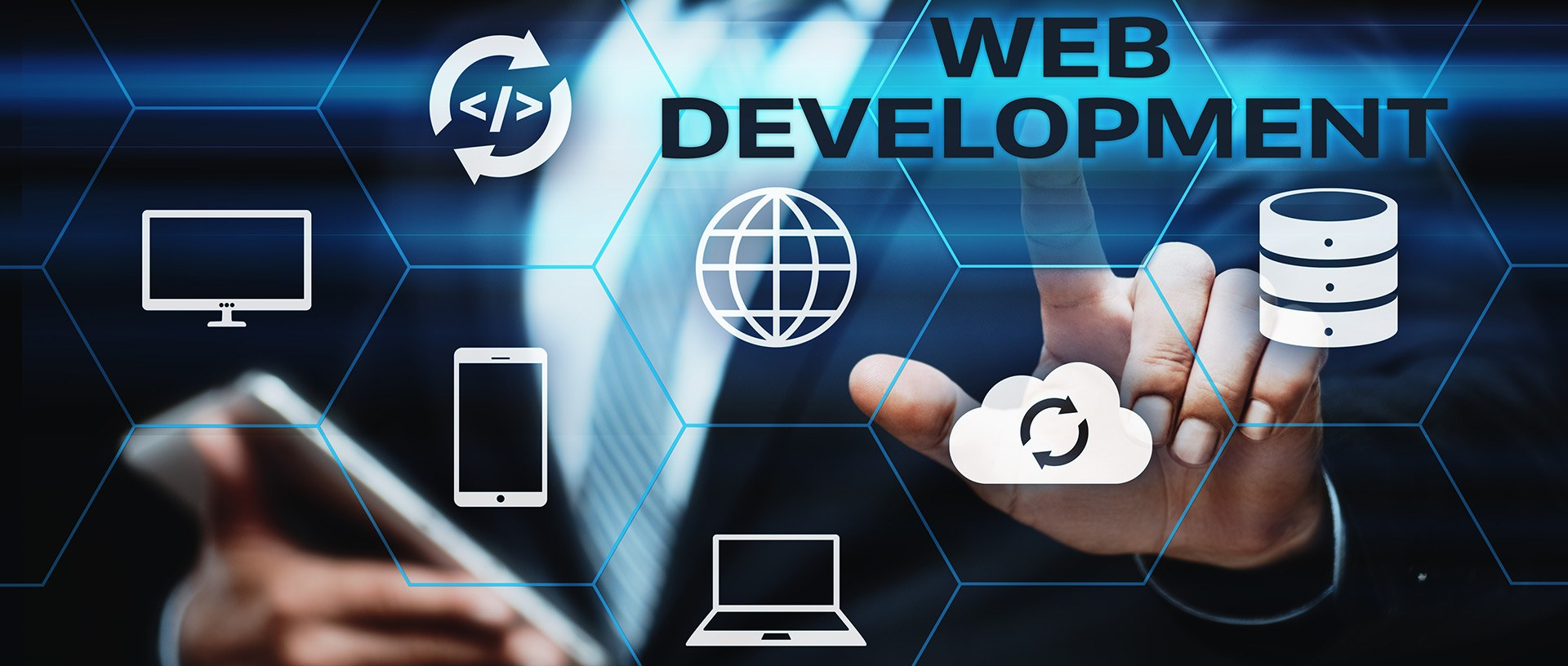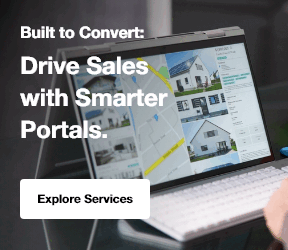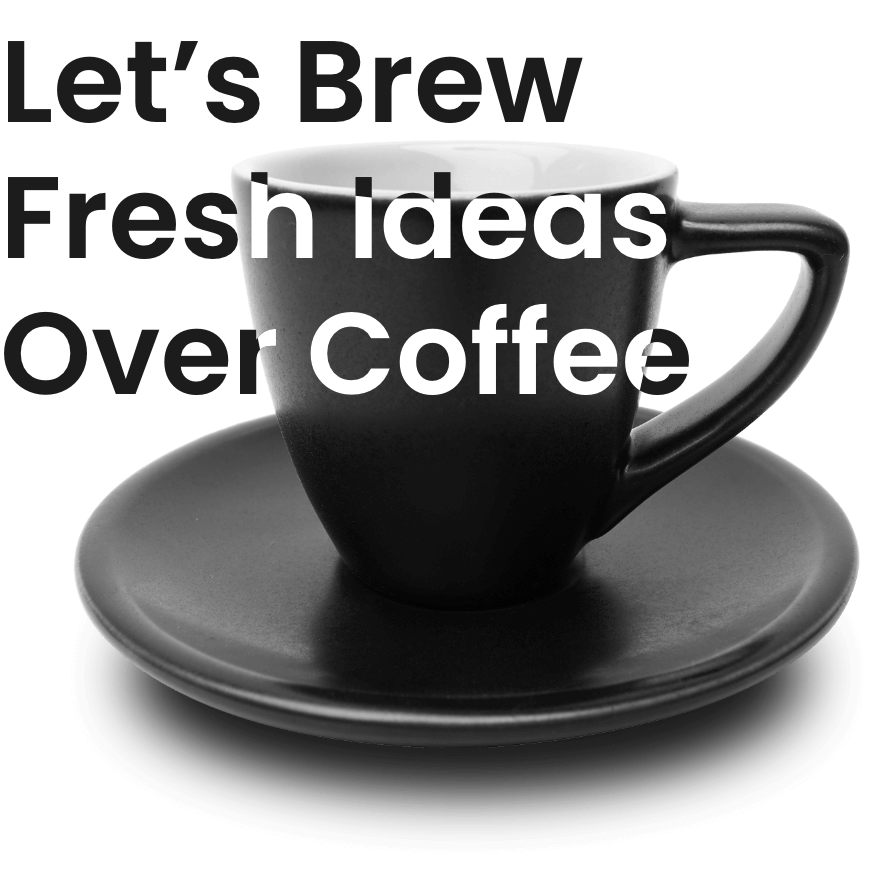In the world of business-to-business (B2B) sales, understanding and optimizing the sales funnel is crucial to driving revenue growth and building lasting relationships with clients.
The sales funnel stages offer a structured framework that guides prospects from initial awareness to becoming loyal customers. Through strategic management of each stage, businesses can enhance their B2B sales funnel and improve conversion rates.
By understanding this journey and implementing a structured process, B2B businesses can improve their sales effectiveness, better engage their prospects, and increase conversion rates.
A B2B sales funnel is a systematic, multi-step process that businesses use to identify, attract, nurture, and convert leads into paying customers.
It encompasses all the stages that a business customer goes through, from becoming aware of a product or service to making the final purchase decision.
The funnel is often divided into several stages that help sales and marketing teams focus their efforts on each lead's current position in the buying cycle.
What is a B2B Sales Funnel?
A B2B sales funnel is a visual representation of the journey that potential customers go through before making a purchase decision.
It's typically depicted as an inverted pyramid, where a large number of leads enter the funnel at the top, and only a few move through to become paying customers.
The funnel is divided into several sales funnel stages, which help sales and marketing teams focus their efforts on prospects at different points in the buyer's journey.
Focus on Converting Leads into Paying Customers
The main goal of the B2B sales funnel is to convert marketing leads into paying customers by guiding them through the final stages of the buying process.
The sales team takes a proactive role in engaging with qualified leads and moving them closer to a purchasing decision.
- Lead Qualification: In the sales funnel, the process begins with identifying leads who are most likely to convert. Sales teams use criteria such as budget, authority, need, and timeline (BANT) to qualify leads.
- Negotiation and Closing: The sales team engages with leads directly to address any remaining concerns, negotiate terms, and finalize the deal. This stage often involves proposals, product demonstrations, and contract negotiations.
- Customer Conversion: The final goal is to secure a signed deal and convert the prospect into a customer.
Importance of a Well-Defined Funnel for B2B Businesses
A well-defined sales funnel is crucial for B2B businesses, helping to streamline lead management, boost conversions, and ensure predictable revenue growth.
It aligns sales and marketing efforts, driving continuous improvement.
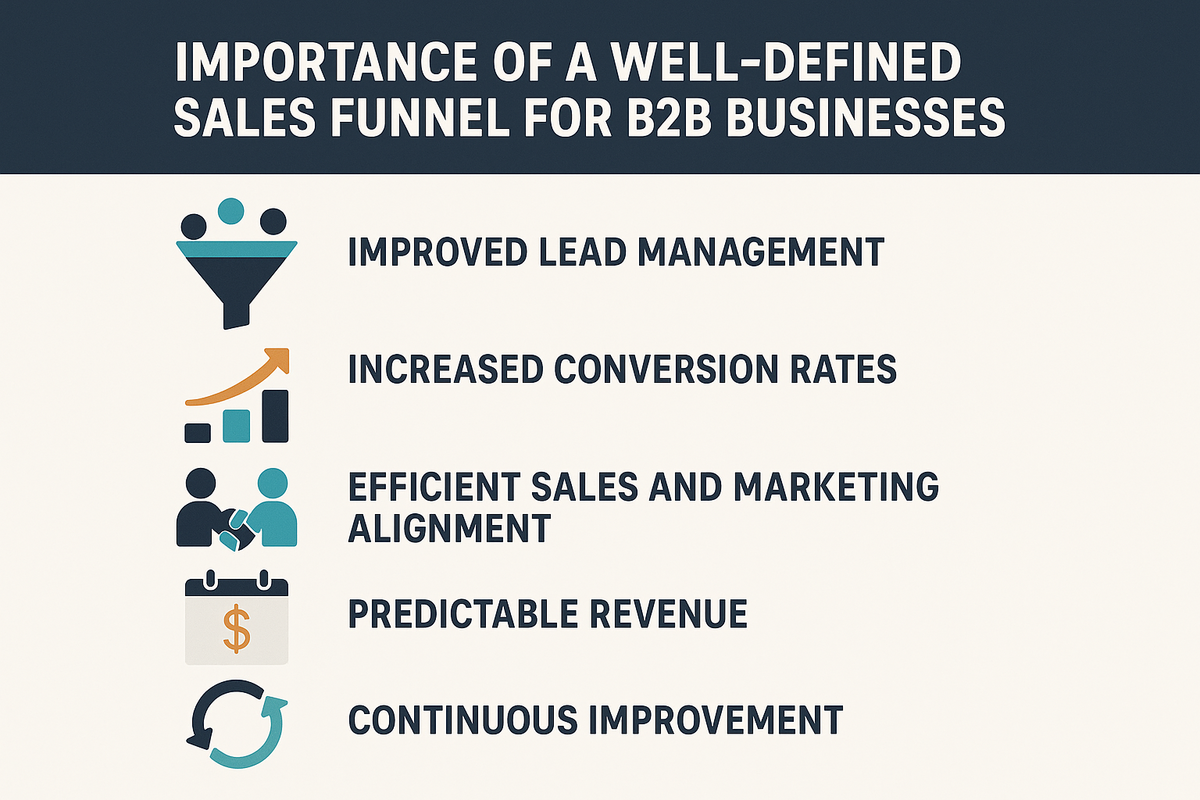
1. Improved Lead Management
The funnel provides a clear structure to manage and track leads. By defining each stage of the sales process, businesses can identify which leads are ready to move forward and which require additional nurturing.
This helps ensure that sales teams focus their efforts on high-quality prospects, for example, in high ticket affiliate marketing, and avoid wasting time on unqualified leads.
2. Increased Conversion Rates
By nurturing prospects through targeted content, personalized communication, and timely follow-ups, businesses can move leads through the funnel more effectively.
A well-optimized funnel increases the chances of converting leads into customers, ultimately improving the bottom line.
You can also implement advertisement examples like retargeting ads to capture the interest of potential customers.
3. Efficient Sales and Marketing Alignment
When sales and marketing teams are aligned around a common understanding of the sales funnel, they can work together more seamlessly. Marketing teams can create content that resonates with prospects at each stage, while sales teams can focus on closing deals with qualified leads, leading to a more cohesive and efficient process.
This alignment can be critical, especially when considering what is network marketing and how to bridge those marketing efforts with B2B sales strategies.
4. Predictable Revenue
By analyzing historical data and understanding how leads move through the funnel, businesses can forecast revenue more accurately. This allows sales teams and management to set realistic goals and make more informed decisions about resource allocation and strategy. For example, businesses can assess the google ads cost to predict ad spend efficiency and ROI.
5. Continuous Improvement
A well-defined funnel also allows businesses to track performance at each stage and identify areas for improvement. By continuously analyzing conversion rates and identifying bottlenecks or weak points, businesses can refine their strategies and optimize the funnel for better results.
Additionally, staying updated on best SEO tools for small businesses can significantly enhance online visibility and help move prospects down the funnel more effectively.
Explore Our B2B Marketing Services!
B2B Sales Funnel vs. B2C Sales Funnel
The B2B sales funnel differs significantly from its B2C counterpart. B2B sales involve longer sales cycles, multiple decision-makers, and often, complex pricing structures. This makes B2B sales funnels more intricate, with a greater need for personalized nurturing and engagement.
|
Aspect |
B2B Sales Funnel |
B2C Sales Funnel |
|
Sales Cycle |
Longer, involving multiple stakeholders and in-depth evaluation |
Shorter, with quicker decision-making by individuals |
|
Buying Process |
Complex, involves committees and multiple approvals |
Simpler, made by individuals with fewer steps |
|
Value Proposition |
Focus on ROI, business outcomes, and long-term partnerships |
Focus on emotions, personal benefits, and immediate needs |
|
Relationship Building |
Emphasizes ongoing support and strategic partnerships |
Primarily transactional, with less emphasis on long-term relationships |
|
Pricing & Negotiation |
Custom pricing models, negotiations, and contracts |
Fixed pricing, no negotiations involved |
How to Build a B2B Sales Funnel?
Building a B2B sales funnel is a structured and strategic process that helps businesses guide potential customers from initial awareness to final purchase, and beyond.
To define your Ideal Customer Profile (ICP), you should also consider what is B2B marketing, especially in terms of targeting businesses that would benefit most from your offering.
Each step in the funnel is designed to move prospects closer to making a buying decision and eventually becoming loyal, repeat customers.
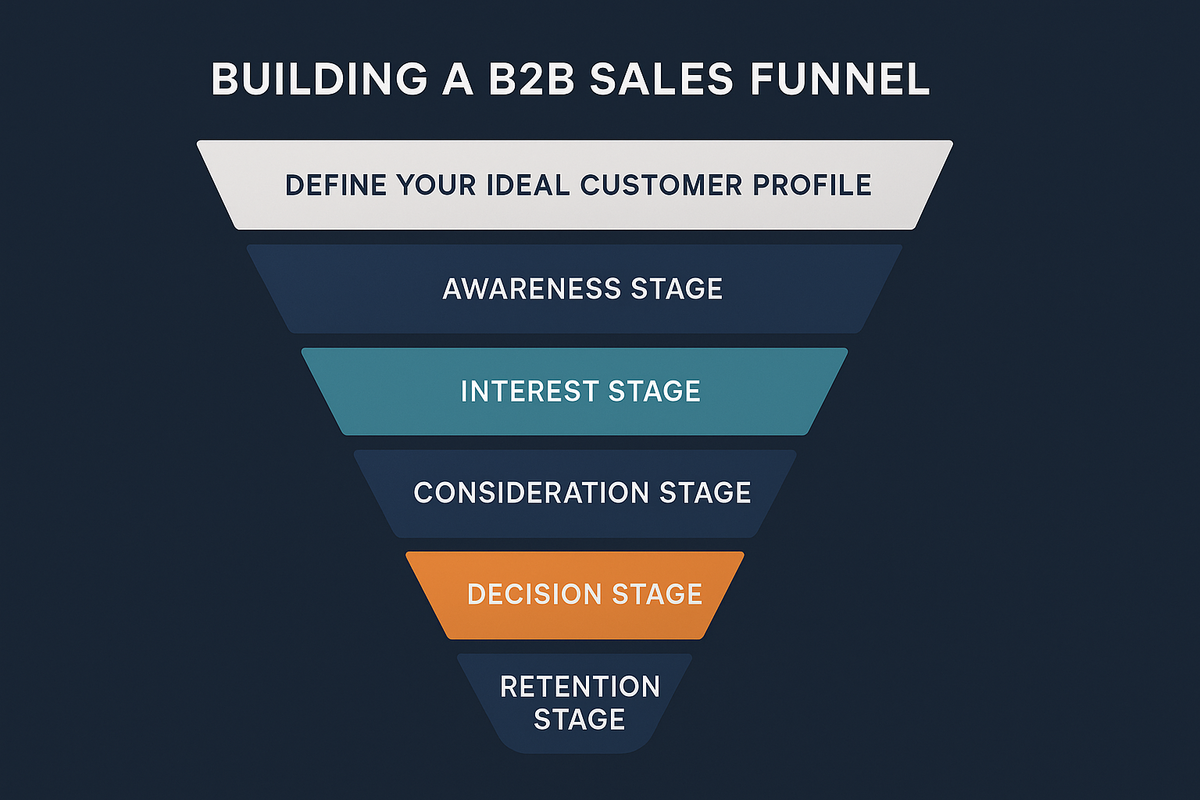
Here’s a more detailed breakdown of how to build a B2B sales funnel.
1. Define Your Ideal Customer Profile (ICP)
The first step in building an effective B2B sales funnel is to define your Ideal Customer Profile (ICP). This involves gaining a clear understanding of who your best potential customers are.
In B2B, your target audience is typically other businesses, so segmenting your prospects based on firmographics such as company size, industry, revenue, and location becomes critical.
Additionally, understanding the Role of LinkedIn in B2B Marketing is essential, as it is a powerful tool for connecting with and engaging decision-makers within these companies.
You must also understand the personas within these companies who influence or make buying decisions. These buyer personas could include decision-makers like C-suite executives, purchasing managers, or department heads.
2. Awareness Stage
Once you've defined your target audience, the next step is to build awareness. At this stage, the goal is to make potential prospects aware of your brand and its solutions.
This is typically the widest part of the funnel, where you cast a broad net to attract as many leads as possible. To accomplish this, you’ll want to employ strategies that increase visibility and grab the attention of your target audience.
Content marketing is one of the most effective methods, which may include blog posts, infographics, videos, and other educational content designed to address the pain points your audience is facing.
3. Interest Stage
As potential customers move further down the funnel, they enter the interest stage. At this point, they’ve shown interest in your offering, but they are still not ready to make a purchase.
The goal here is to nurture these leads and keep them engaged with your brand. This can be achieved through targeted email marketing campaigns, sending newsletters or educational content that dives deeper into the challenges and solutions your product offers. LinkedIn Marketing can also be an effective strategy to engage B2B prospects and promote educational content to a highly relevant audience.
Webinars are also an excellent tool to engage prospects during the interest stage.
By hosting live or recorded sessions, you can showcase your expertise and provide value by answering questions, addressing concerns, or demonstrating your product’s capabilities.
4. Consideration Stage
The consideration stage is where prospects are actively evaluating their options. They are aware of their needs, and now they’re looking for the best solution that fits those needs.
At this stage, your role is to provide more in-depth information about your products and services, highlighting how they specifically solve the prospect's pain points.
If your business is in need of organic SEO services, you can use this stage to showcase how your SEO expertise can benefit the prospect’s online visibility and attract more qualified leads.
To move prospects through this stage, it’s important to offer detailed product information, including features, benefits, and advantages over competitors.
5. Decision Stage
The decision stage is where the magic happens. This is the point where prospects are ready to make a purchase decision, and it’s your job to provide them with the final push to convert.
By now, the prospects are fully aware of the benefits your solution offers, so your focus should shift to closing the deal.
During this stage, prospects may require final assurances or clarification regarding pricing, features, or delivery.
If you're in an industry like oil and gas marketing agency, you may need to emphasize how your solution is tailored to meet the specific needs of clients in this sector.
Offering proposals, along with a detailed breakdown of costs, ROI, and value, is an important strategy. You may also present discounts, custom packages, or special offers to incentivize prospects to finalize the deal.
6. Post-Purchase / Retention Stage
Once a prospect becomes a customer, the funnel doesn’t end. The post-purchase stage focuses on ensuring customer satisfaction and building a relationship for long-term retention.
This is where tools like Shopify are useful to help streamline the e-commerce experience and how does Shopify work to manage customer relationships effectively.
Customer success teams should engage regularly to ensure clients are satisfied with their purchase and resolve any issues that arise.
Furthermore, ongoing engagement through check-ins, updates, or offering additional services can increase customer loyalty. Retention strategies, such as loyalty programs or offering add-on services, can also help businesses maximize customer lifetime value.
Explore Our Digital Marketing Services!
How to Optimize Your B2B Sales Funnel?
Optimizing a B2B sales funnel is essential for improving conversion rates, reducing sales cycles, and maximizing the return on investment (ROI).
By refining each stage of the funnel, businesses can ensure they are making the most of their leads, improving the efficiency of their sales teams, and ultimately driving growth.
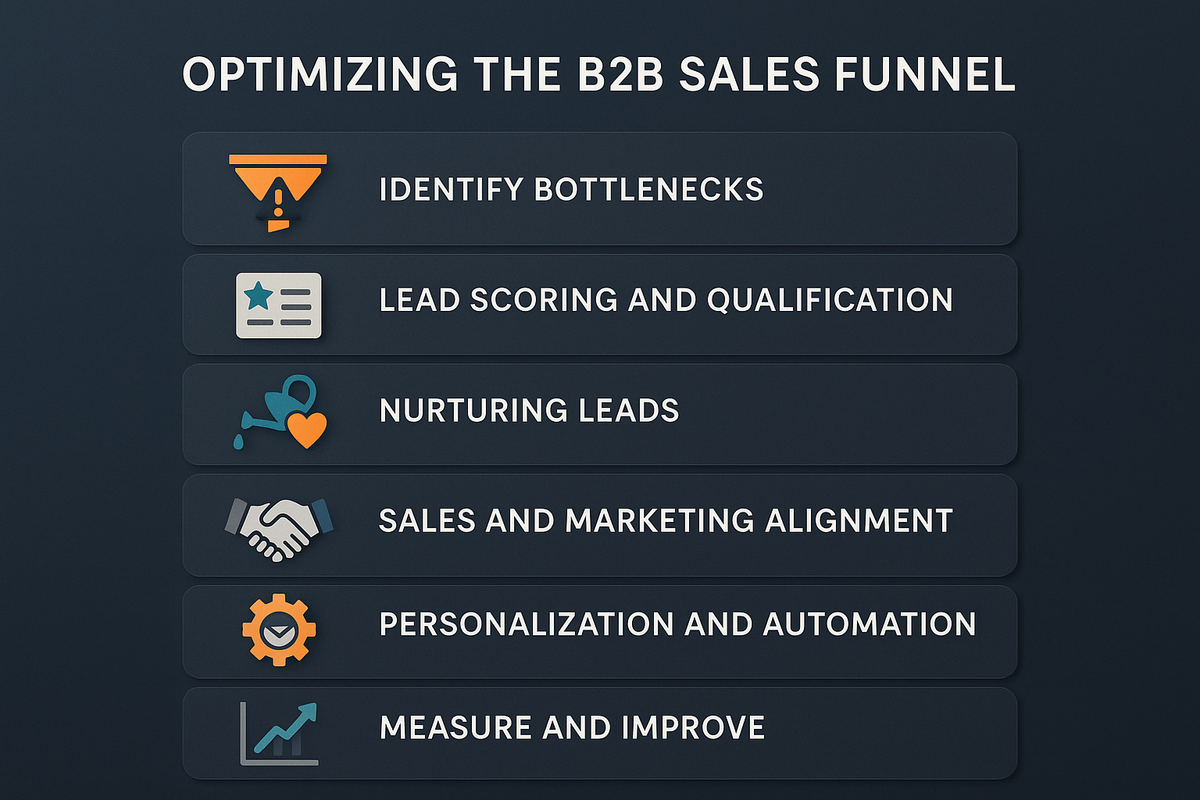
A crucial step in optimization is identifying bottlenecks, for example, using a noindex strategy to prevent low-quality pages from being crawled by search engines, which could waste resources.
Regularly tracking key performance metrics is also important, such as what is the digital marketing strategy that tracks users across the web? This is essential for understanding user behavior and optimizing the funnel for better results.
Here’s a more detailed breakdown of how to optimize your B2B sales funnel:
1. Identify Bottlenecks
The first step in optimizing your B2B sales funnel is to identify bottlenecks points where prospects drop off or fail to move to the next stage.
Bottlenecks can occur at various points in the funnel, such as during lead qualification, the consideration stage, or even after the decision stage. Analyzing where prospects consistently drop off helps pinpoint the specific areas that need attention.
2. Lead Scoring and Qualification
Another key optimization strategy is lead scoring and qualification. Lead scoring is a methodology for ranking prospects based on their likelihood to convert into customers.
By implementing a lead scoring system, you can assign numerical values to leads based on factors such as engagement level, job title, company size, and other firmographics.
This process helps prioritize high-quality leads who are most likely to move forward and make a purchase. In some cases, what is illustration can be a helpful tool for visualizing the lead scoring process, allowing teams to quickly identify which leads are most valuable.
This process helps prioritize high-quality leads who are most likely to move forward and make a purchase.
3. Nurturing Leads
Lead nurturing is a crucial part of optimizing the funnel, especially for B2B businesses with longer sales cycles. Using email sequences, retargeting ads, and targeted content, businesses can keep prospects engaged throughout their journey.
This process involves delivering relevant content and personalized communication at each stage of the funnel to keep leads interested and moving forward.
One question that often arises is what are five marketing strategies that retailers spend half of their annual budget on? Understanding these strategies can help B2B companies refine their own lead nurturing techniques to maximize their budgets.
4. Sales and Marketing Alignment
Without a strong partnership between these two teams, there’s a high risk of miscommunication, misaligned goals, and inefficient lead management.
A unified approach ensures that both teams are working toward the same objectives, using the same metrics to evaluate success, and passing leads through the funnel seamlessly.
Sales teams need clear guidance on what constitutes a Marketing Qualified Lead (MQL) and Sales Qualified Lead (SQL), and marketing teams need to understand the types of content or messaging that resonate most with leads at different stages of the funnel.
5. Personalization and Automation
To optimize your B2B sales funnel effectively, personalization and automation play important roles. Personalization allows you to deliver tailored messages and content to each prospect, ensuring that their unique needs are addressed.
This helps to build stronger relationships and increases the likelihood of conversion. Personalization can be applied in emails, landing pages, and even sales calls, where the prospect feels like they are being spoken to as an individual, not just another lead.
CRM tools and automation platforms like HubSpot, Marketo, or Salesforce allow businesses to automate repetitive tasks such as sending personalized emails, scheduling follow-ups, or triggering content offers based on lead behavior.
6. Measure and Improve
Finally, regularly tracking key performance metrics is essential for optimizing the sales funnel. Metrics like conversion rates, sales cycle time, customer acquisition cost (CAC), and lifetime value (LTV) provide valuable insights into the performance of the funnel and help identify areas that need improvement.
- Conversion rates show how well leads are moving from one stage of the funnel to the next, helping to identify weak points in the process.
- Sales cycle time helps measure the length of time it takes for a lead to convert, which can highlight inefficiencies.
- Customer acquisition cost (CAC) measures how much it costs to acquire a customer, including marketing and sales expenses. Reducing this cost can increase the overall profitability of your funnel.
- Lifetime value (LTV) helps measure the long-term value a customer brings, which helps businesses understand how much to invest in acquiring new customers.
FAQs: B2B Sales Funnels
What is a B2B Sales Funnel?
A B2B sales funnel is a structured process that guides business prospects from initial awareness to final purchase, helping businesses convert leads into customers through various sales funnel stages.
What Are the Stages of a Sales Funnel?
The typical sales funnel stages are Awareness, Interest, Consideration, Decision, and Post-Purchase. These stages help in nurturing leads at different points in the B2B marketing funnel.
How Does the B2B Sales Funnel Differ from the B2B Sales Pipeline?
While the B2B sales funnel represents the journey from lead generation to conversion, the B2B sales pipeline focuses specifically on the active deals and opportunities being worked on by the sales team.
Can You Provide Some Sales Funnel Examples for B2B?
Sales funnel examples in B2B include lead generation via content marketing, offering product demos at the consideration stage, and presenting proposals at the decision stage of the B2B full sales funnel.
What is B2B E-commerce Sales Funnel Optimization?
B2B e-commerce sales funnel optimization involves improving the online experience at every stage of the funnel, from product discovery to checkout, to drive more conversions and streamline the buying process.
How Do I Measure B2B Sales Funnel Performance?
To assess B2B sales funnel performance, track metrics like conversion rates, customer acquisition cost (CAC), and the length of the sales cycle, all of which indicate the effectiveness of each stage in your B2B sales funnel optimization.
Conclusion
The B2B sales funnel is an essential tool for businesses looking to drive growth and optimize their conversion rates.
It provides a structured framework that helps companies guide prospects through every stage of the buying journey, from initial awareness to final purchase and beyond.
By focusing on each stage of the funnel, businesses can better understand the needs of their customers, provide value at every touchpoint, and increase the likelihood of converting leads into long-term customers.
The importance of a well-defined sales funnel cannot be overstated. It allows businesses to prioritize high-quality leads, nurture them effectively, and align sales and marketing efforts for seamless transitions.
By identifying bottlenecks, refining lead scoring processes, and investing in automation, businesses can accelerate sales cycles and improve efficiency across the board.
Optimizing the funnel leads to not only better conversion rates but also improved customer satisfaction and retention, which ultimately drives revenue growth.
However, the process of optimizing the B2B sales funnel should never be static. As market conditions, customer needs, and business environments shift, it is crucial for businesses to continuously assess and improve their sales funnel.
Regularly analyzing key performance metrics, experimenting with new strategies, and adapting to changes in customer behavior are essential for staying competitive and achieving sustained success.
Businesses should view their B2B sales funnel as a dynamic, evolving system that requires ongoing attention and refinement.
By investing time and resources into optimizing the funnel, businesses can ensure they are not only attracting and converting leads but also building lasting relationships with their customers, which is key to achieving long-term success in the B2B space.
